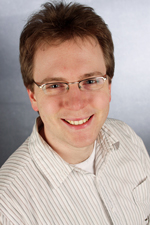It’s been a while since the last edition, but this week, the MolBio Picks of the Week (usually at home over at MolBio Research Highlights) are hosted here! If you are interested in one or more of the blog posts or research papers summed up here, please check out the full posts at the respective blogs.
![]() 1. Endosymbiotic theory meets aging
1. Endosymbiotic theory meets aging
Mitochondria (and chloroplasts in plants, by the way) are organelles in our cells that according to the endosymbiotic theory go back to once free-living bacteria that were taken up by the last common ancestor of the eukaryotes. During endosymbiosis, these bacterial cells brought their own genome with them, of course. Over millions of years, a lot of those formerly bacterial genes have been transferred to the nuclear genome. Fight aging! discusses a recent paper that compares the amount of transferred mitochondrial genes in several species with their life span. The result: The more mitochondrial genes were found in the nucleus, the longer the species lives. This makes sense, since
One thing to consider in this respect is that nuclear DNA is far better protected from damage than mitochondrial DNA. Indeed, one root cause of aging is that our mitochondrial DNA is battered over the years by side-effects of the chemical reactions that produce ATP. This is not a problem suffered by nuclear DNA to anywhere near the same degree.
2. One more piece in the puzzle that is triple-negative breast cancer
The Cancer Research UK Science Update blog tells us about research on triple-negative breast cancer – those cases where patients have very low levels of receptors for the hormones oestrogen and progesterone, as well as the protein HER-2. Therefore, standard treatments acting on these pathways work poorly, and alternative therapies have to be developed. A combination of clever cell culture work (I have to quote that section below) and gene expression tests in triple negative cancer cells from patients found a gene called 53BP1 at the center. And it is connecting BRCA1, a gene responsible for hereditary forms of breast cancer, with p53, the so-called ‘guardian of the genome’.
To start with, the team studied laboratory-grown cells that lacked BRCA1. Although it seems a bit counter-intuitive (as BRCA1 is associated with cancer), these cells actually don’t grow very well because they can’t repair damage to their DNA. But, unlike these ‘artificial’ BRCA1-less cells, cancer cells with faulty BRCA1 also have faults in other genes that allow them to compensate, so they ignore DNA damage and grow out of control.
The scientists used a clever technique (called “insertional mutagenesis”) to randomly ‘hit’ genes in these BRCA1-deficient cells, stopping them from working, then looked for cells that started growing well. They discovered that when a gene called 53BP1 was damaged, in addition to faulty BRCA1, then the cells grew vigorously.
3. There is a LUCA after all
Douglas Theobald was interested in quantitative evidence addressing the probable origin of life on earth. Even back to Darwin, it was generally thought that all organisms go back to one common ancestor sometimes called LUCA (last universal common ancestor). But a lot of research in recent years showed that horizontal gene transfer (HGT) is widespread at least in prokaryotes. This could mean that instead of one common ancestor, there could have been several all interconnected by HGT. I should point out here that the question of one or more ancestors at the start of life does not have any influence on the processes happening afterwards, e.g. evolutionary theory. Code for Life writes about a recent paper by Theobald trying to find the probabilities of several models of ancestry. And it seems, at least from this paper, that a single common ancestor is much more probable than all the other models that were tested.
Using a model with the proteins taken together as a group (i.e. not considering horizontal gene transfer), a model with single ancestor was very strongly favoured despite that the proteins that have a HGT ancestry might confound the analysis.
When tested using a model that allowed the proteins in each class of life to evolve independently of the other, hence allowing for HGT events to be accounted for, this most often more strongly supported the model of a single common ancestor than the previous models.
Thus, this work does not argue against a “web” with extensive horizontal transfer in the earlier stages of the evolution of life; it strongly suggests is that such an initial web of life would arise from a single ancestry.
These are just some of the great posts on peer-reviewed science that appeared at researchblogging.org over the last week!
Eine Bitte an meine deutschsprachigen Leser: Wenn möglich, versucht bitte auf Englisch zu kommentieren, dass alle folgen können! Es geht dann hier auch wieder auf Deutsch im nächsten Post weiter, versprochen!
Muradian KK, Lehmann G, & Fraifeld VE (2010). NUMT (“new mighty”) hypothesis of longevity. Rejuvenation research, 13 (2-3), 152-5 PMID: 20462381
Bouwman, P., Aly, A., Escandell, J., Pieterse, M., Bartkova, J., van der Gulden, H., Hiddingh, S., Thanasoula, M., Kulkarni, A., Yang, Q., Haffty, B., Tommiska, J., Blomqvist, C., Drapkin, R., Adams, D., Nevanlinna, H., Bartek, J., Tarsounas, M., Ganesan, S., & Jonkers, J. (2010). 53BP1 loss rescues BRCA1 deficiency and is associated with triple-negative and BRCA-mutated breast cancers Nature Structural & Molecular Biology DOI: 10.1038/nsmb.1831
Theobald, D. (2010). A formal test of the theory of universal common ancestry Nature, 465 (7295), 219-222 DOI: 10.1038/nature09014


Kommentare (1)